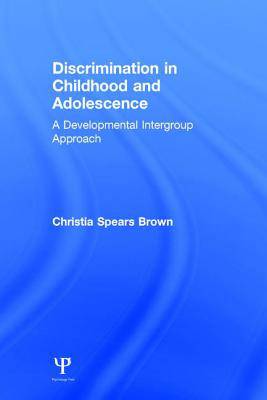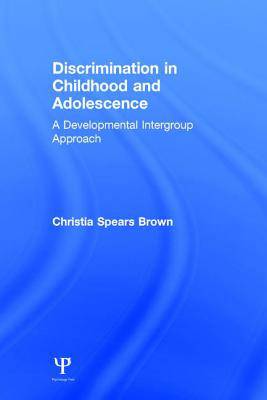
- Afhalen na 1 uur in een winkel met voorraad
- Gratis thuislevering in België
- Ruim aanbod met 7 miljoen producten
- Afhalen na 1 uur in een winkel met voorraad
- Gratis thuislevering in België
- Ruim aanbod met 7 miljoen producten
Discrimination in Childhood and Adolescence
A Developmental Intergroup Approach
Christia Spears BrownOmschrijving
Discrimination impacts most youth at some point. Almost all children and adolescents belong to at least one stigmatized group, whether they are a Black or Latino boy in school; an immigrant or refugee; a gay, lesbian, or bisexual teen; or a girl in physics class. Discrimination on the basis of race/ethnicity, immigration status, gender, sexual orientation, and gender identity can have long-term academic, psychological, and social repercussions, especially when it is directed at a cognitively developing child or an emotionally vulnerable adolescent. How children and adolescents are impacted by this discrimination depends on their cognitive ability to perceive the bias, the context in which the bias occurs, and resources they have to help cope with the bias.
This book details, synthesizes, and analyzes the perception and impact of discrimination in childhood and adolescence across multiple stigmatized social groups to help us better understand the complex phenomenon of discrimination and its long-term consequences. By looking at the similarities and differences in discrimination across all social groups, we can more fully understand its mechanisms of influence. Before we can fully address the persistent achievement gap between White and ethnic minority children, the high rates of suicidal thoughts among LGBT youth, and the underrepresentation of girls in STEM careers, we must first examine the ways in which discrimination influences and is understood by children, with their unique cognitive constraints and within the specific contexts in which they live.
Specificaties
Betrokkenen
- Auteur(s):
- Uitgeverij:
Inhoud
- Aantal bladzijden:
- 234
- Taal:
- Engels
Eigenschappen
- Productcode (EAN):
- 9781138939974
- Verschijningsdatum:
- 22/03/2017
- Uitvoering:
- Hardcover
- Formaat:
- Genaaid
- Afmetingen:
- 152 mm x 229 mm
- Gewicht:
- 485 g

Alleen bij Standaard Boekhandel
Beoordelingen
We publiceren alleen reviews die voldoen aan de voorwaarden voor reviews. Bekijk onze voorwaarden voor reviews.












